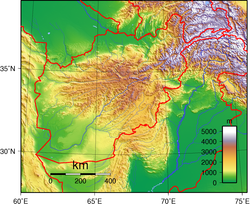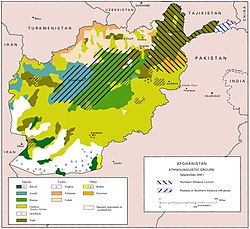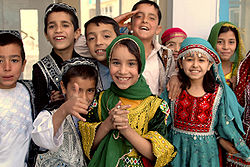


The following outline is provided as an overview of and topical guide to Afghanistan:
Contents
- General reference
- Geography of Afghanistan
- Environment of Afghanistan
- Regions of Afghanistan
- Demography of Afghanistan
- Government and politics of Afghanistan
- Structure of government
- Government and politics of Islamic Republic of Afghanistan (2004–2021)
- Branches of government
- Foreign relations of Afghanistan
- Law and order in Islamic Republic of Afghanistan
- Military of Islamic Republic Afghanistan
- Local government in Afghanistan
- History of Afghanistan
- By period
- By subject
- Culture of Afghanistan
- Art in Afghanistan
- People of Afghanistan
- Religion in Afghanistan
- Sports in Afghanistan
- Economy and infrastructure of Afghanistan
- Education in Afghanistan
- Health in Afghanistan
- See also
- References
- External links
Afghanistan – landlocked sovereign country located in Central Asia. Since the late 1970s Afghanistan has experienced a continuous state of civil war.





